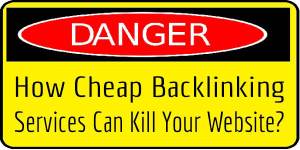
With the number of online shoppers increasing on every month, it is not enough to have only an offline store. An online store is a must to have. ECommerce platforms software has come in handy for small and medium business to create online presence. Ecommerce software allows retailer to easily create an online store to sell goods online and can be set up within a few minutes. Selecting the right solution is critical problems with the retailers as there are many online platform available in the market, a wrong selection could work against your growth.
Selecting the right eCommerce software for your online store needs a basic understanding of the upcoming hurdles with software implementation. So, our software experts & analysts have come up with following top features a retailer need to look for while buying an ecommerce software platform.
Table of Contents
1.) Compatibility With In-House Running Software:
Integrating your ecommerce website with existing business processes and third party systems such as accounting, inventory management, ERP Systems and others add productivity and functionality to your store. For example, on integrating an ecommerce website with your already running CRM software or sales inventory management system, you will no longer require maintaining customer details and product inventory in two different places. Such blending of the website with the on-site applications result in less duplication of data and more accurate analysis of results. You can spend more time on planning and strategizing rather than administering data between multiple processes running in your organization.
2.) Cross Channel Integration
A seamless buying experience is required to satisfy the demands of today’s always “on-line” consumers and customers. Multi-channel integration with other powerful websites like Amazon or Google shopping, or social networks helps in maximizing conversions and revenue by delivering an easy, engaging shopping experience. Hence, deliver a cross-channel experience –whether in-store, online, via social networks or from mobile devices to consumers.
Another way to maximize your web sales potential is by integrating your website with your in-house e-sales and delivery management system. This will not only reduce the selling cost but will also support the complete end-to-end process from deal closure to delivery. You will be able to study, analyze and plan according to the sales and purchase trend across both online and off-line channels.
3.) A Secure Checkout Experience
Trust and security are two most important factors in ecommerce today. Not only do you need to keep your customer’s information safe but also provide an easy and convenient “cart” to “completed order” experience. One of the simplest methods of speeding checkout is to limit the checkout form to as few fields as possible and keep the entire form on a single page to avoid loading a new page at each stage of the checkout process.
Moreover in addition to secure payment methods a little description about the security so provided further reassures the customer to continue with the payment process.
4.) Easy Product Management And Pricing
When you have thousands of products to upload, creating product listings one product at time will become a daunting task. Hence, you need a simple and fast way to update product and their prices simultaneously to your store.
Look for functionalities like web-based catalog editor, CSV import/export, and mass product editor etc. so that you can export the product information, update it and re-import it on to the e-commerce website with minimum efforts. Some ecommerce websites offer advanced pricing options and pricing calculator tools, which can do price calculations by percent, profit, price, and quantity and customer type.
5.) Workflow-Driven Sales Management
Workflow provides a simple point-and-click interface to automate business processes. You can set auto email alerts for specific deals, auto assign tasks through different stages from order to delivery. This results in speeding and streamlining all phases of sales from order placement to delivery and analysis. It will help you in pursuing more business in less time and lower down the expenses significantly.
6.) Warehouse Management
Time is money and so is space. Hence, make the most of it with structured directed warehouse management system offered together with an ecommerce platform. In an ecommerce environment the related logistics, speed and accuracy of web order shipments are the metrics by which client satisfaction and retention are achieved. Proper coordination between the sales order management system and the warehouse management system will reduce significant cost and time handling transactions effectively.
7.) Analytics And Sales Reporting
Good ecommerce software provides in-depth sales reporting and analysis tools. By tracking and analyzing such important data as customer history, failed carts, referring sites etc. retailers can gain insight into effective ways to boost sales and revenue. Understanding the patterns and trends that impacts buyer behavior are crucial to an online retailer’s ability to compete effectively.
8.) Integrated CRM
The CRM software integrated with eCommerce software highly impact the sales, customer service & satisfaction.
eCommerce integrated with the CRM software allows user to view an individual account details &historical activities of the buyers. This allows to easily & quickly access documents related to customer order and hence give ability to your customer service teams in providing transparent information relating to customer orders. Also, you can tailor the marketing activities, cross-sell & upsell.
9.) Financial Integration
To keep financial management sound, user needs real-time update over the accounts from both online & offline sales, credits & Payment data. Some of software comes with inbuilt accounting system to control the financial processes. And others software offers an easy integration possible with the existing software.


 About the Author:
About the Author:






![How-To-Create-The-Perfect-Visual-Identity-Of-The-Digital-Platform-[Answered]](https://www.exeideas.com/wp-content/uploads/2020/08/How-To-Create-The-Perfect-Visual-Identity-Of-The-Digital-Platform-Answered-300x150.jpg)









Be the first to write a comment.